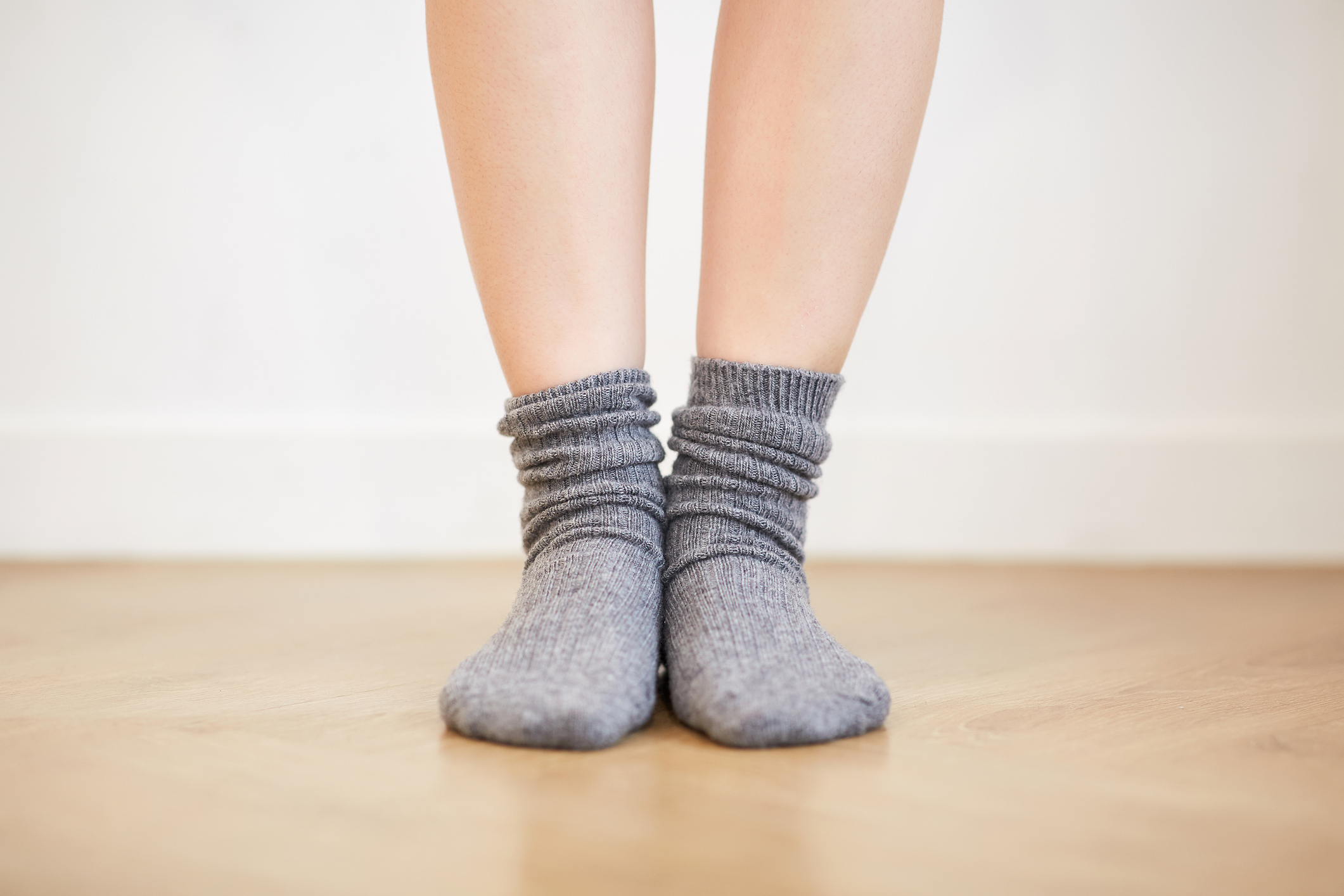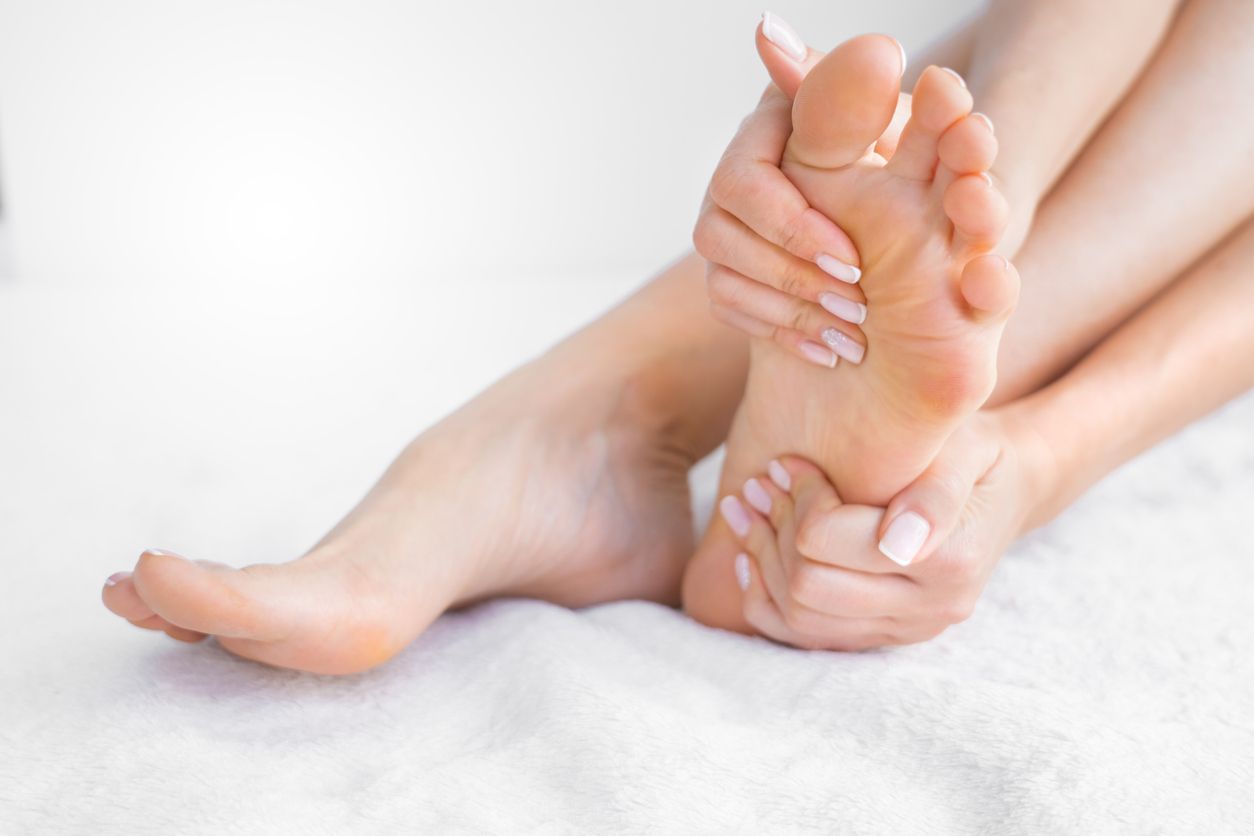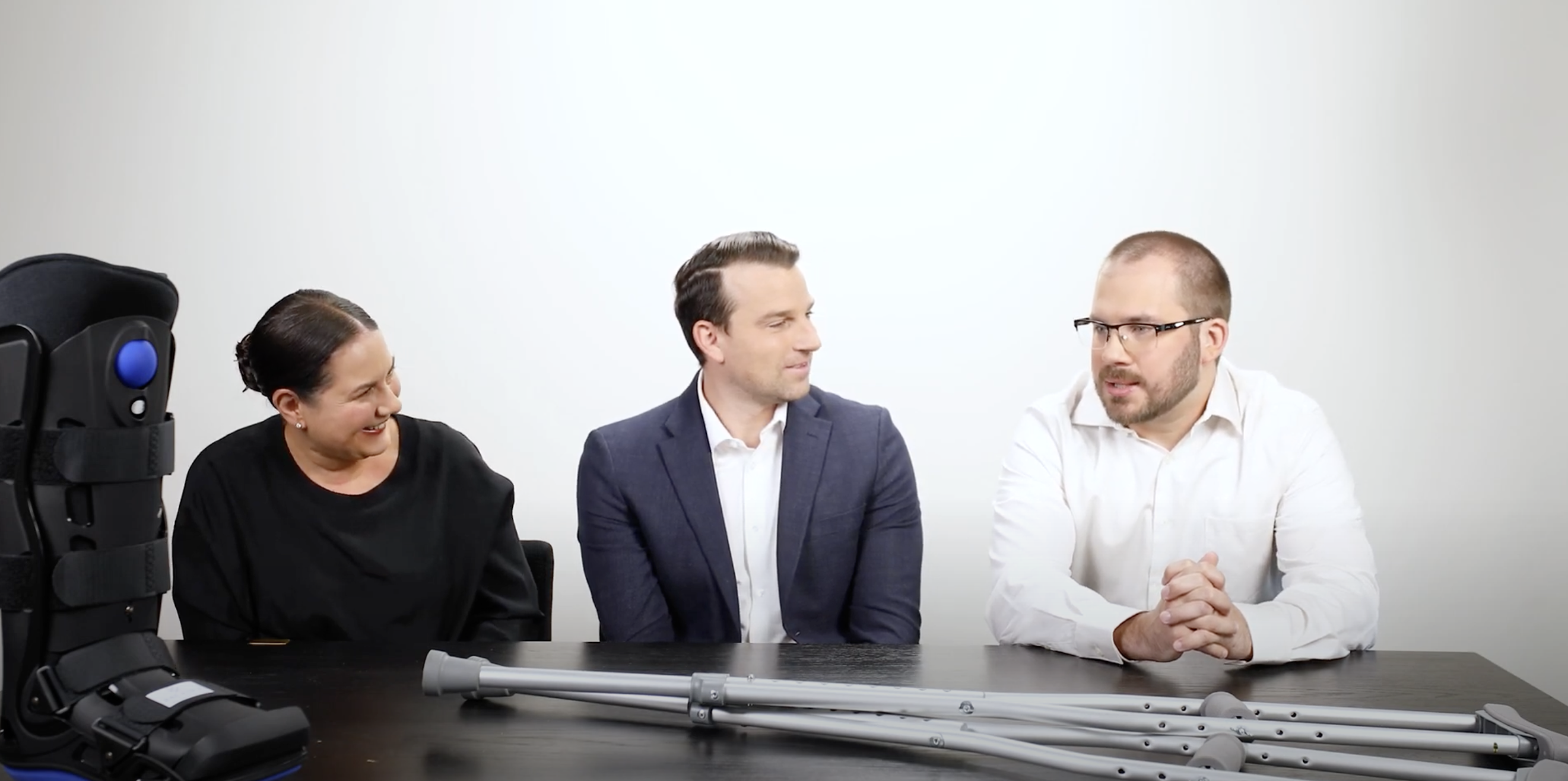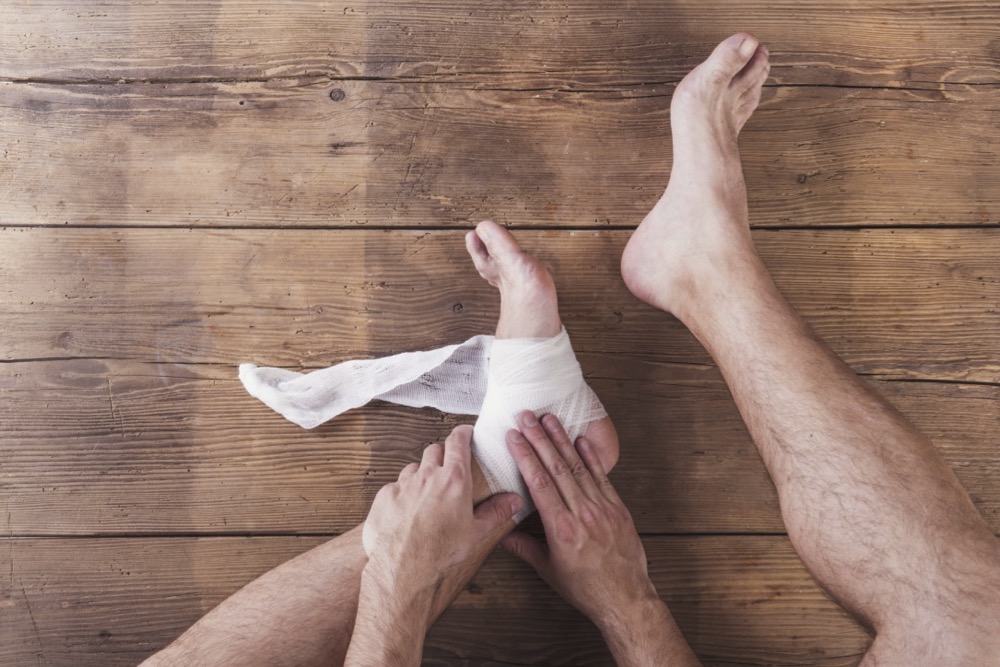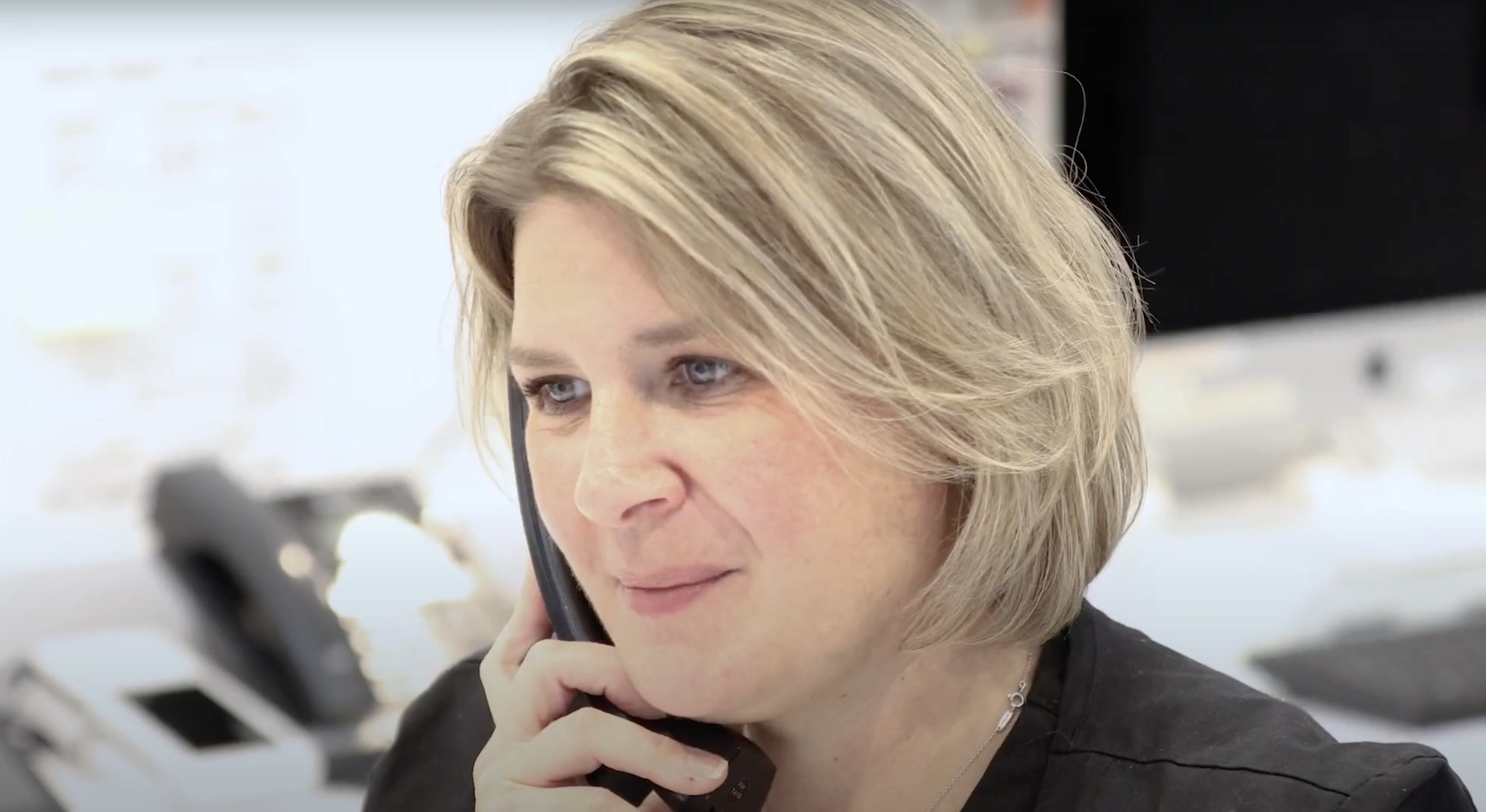From the Desk Of Lindsay Lupton
From the Desk of Lindsay Lupton, MSN, CNP, CWS
Acute vs Chronic Wounds
Wounds can be classified into two broad categories, acute and chronic, based on time to heal and cause of the wound. Medically, the term “acute” refers to a sudden onset of symptoms, illness or injury. Acute wounds most commonly occur because of surgery or trauma and heal in a timely, organized and predictable fashion. Conversely, chronic wounds are characterized by delayed healing and inability to progress through the expected, orderly healing trajectory.
Successful wound healing has four distinct phases: hemostasis, inflammation, proliferation and maturation, and takes two to four weeks. Hemostasis, the first phase, occurs immediately after wounding through blood vessel constriction and clot formation. This stage of healing lasts up to two days. The clot and wounded tissue release chemical messengers, signaling the migration of immune cells that clear bacteria and cellular debris. This is known as the inflammatory phase and lasts three to five days. These cells also initiate the tissue repair cascade which begins the proliferative phase. In this third stage of healing, various specialized cells promote new blood vessel growth, collagen synthesis and granulation tissue formation which develops into a provisional matrix of reparative dermis. This process is called re-epithelialization. The inflammatory and proliferative phases overlap and generally lasts five to fourteen days. In the final phase of healing, maturation, the newly generated epithelium matures and remodels to approach the architecture of the normal surrounding tissue. This process begins around fourteen days and can take up to two years to complete, depending on the degree of tissue destruction.
Although no exact designated timeframe exists, wounds persisting greater than six weeks duration are considered chronic. Failing to progress through the four phases, the wound stalls in an inflammatory cycle and cannot enter the proliferative stage. The most common reason is underlying disease processes like diabetes, venous insufficiency, decreased circulation or obesity. Other factors known to delay wound healing are bacterial load and certain medications.
Fortunately, wound specialists exist to help patients identify causes of chronic wounds and ways to overcome them. The therapeutic partnership between wound specialist and patient unlocks the door to sustainable health habits that can correct systemic disease. Additionally, through advanced wound dressing selection and tissue grafting, the microenvironment of the wound is optimized, and healing becomes possible.
If you or a loved one has a chronic wound, schedule your consultation with our wound specialist today!
Let us restore your balance.
Chronic wound? We can help.
Schedule your consultation with our wound specialist today and start healing.
Wellness and Proactive Care
Wellness and Proactive Care
Here’s how you can keep your feet and ankles healthy – without visiting the doctor
It’s reassuring to know that modern, advanced health care offers plenty of effective tools to correct common ailments and get us back on our feet. And while breaks, sprains, bruises, cuts, and more can result in a doctor’s visit, there are a number of things you can do on your own to keep your feet and ankles happy and out of the doctor’s office.
Proactive podiatry care focuses on the ways that you can support your lower extremities to prevent serious injuries and ailments. Here are some preventative care recommendations from the experts at Balance Foot & Ankle:
- Invest in quality, proper-fitting shoes: If there’s one aspect of your wardrobe to not go cheap on, it’s the shoes on your feet. Taking the time to find a quality shoe that not only fits you properly, but meets the needs of your lifestyle, is a critical step to prevent foot and ankle pain. Avoid the big stores and seek out a local shoe retailer that will take the time to look at your feet size, analyze your foot strike, and consider your footwear needs to help you find a pair that’s right for you. Balance also offers custom-fitted orthotics in partnership with Earthwalk Orthotics, a conservative intervention that can add additional comfort and support to your shoes
- Warmup before exercise: Whether it’s chasing your kids around the backyard, going for a run, or meeting your friends for a game of pickup basketball, it’s important to always make the time to warm up before jumping into action. The idea of a warm up is to gradually “fire up” the muscles you’ll be utilizing for a particular activity, and it can be as simple as progressing from a slow walk for a few minutes to a faster pace before a run.
- Strengthen your ankles at home: No gym or special equipment is required to build and maintain strong feet and ankles. By getting the habit of routinely strengthening and mobilizing your ankles, you can stay ahead of common injuries and ailments. Check out our article that walks you through several simple, at-home exercises
- Enlist the R.I.C.E. method: No matter how careful you are, accidents still happen. It could be a twisted ankle while hiking on an uneven trail or dropping a heavy object on your foot that can leave you with notable pain and discomfort. Short of a serious injury, you can likely recover fully on your own within a matter of days or weeks by following the time-tested “R.I.C.E.” method, which stands for rest, ice, compression, and elevation.
Following these steps diligently will go a long way in keeping your feet happy and out of the doctor’s office. But there are still instances when injuries are serious and can’t be treated at home. If you’ve tried the above strategies and are still held back by pain or discomfort, it might be time to speak with a medical professional. Here’s a guide to helping you decide if it’s time to schedule a visit with Balance Foot & Ankle.
Let us restore your balance.
If you notice the discomfort in your heels persisting, our trusted team of podiatrists at Balance Foot & Ankle can work with you to alleviate the pain by customizing a treatment plan to your lifestyle.
Foot and ankle surgery: advice for before and after your procedure
Foot and ankle surgery: advice for before and after your procedure
From bunions and hammertoes to achilles ruptures, arthritic joints, and broken bones, there are many foot and ankle conditions and ailments that might require surgery in order to make a full recovery. There’s no doubt that surgery is a major milestone on your journey to recovery. However, many patients overlook the importance of the days and weeks leading up to and following a surgical procedure when, in fact, these are critical periods in the recovery process.
Here are some general tips and best practices to keep in mind ahead of a scheduled surgery. For specific recommendations, be sure to work with your medical provider to identify the best ways to promote a successful recovery.
Preparing for your surgery
- Understand the procedure: to avoid any surprises during the day of the operation, be sure to ask your surgery team plenty of questions about the procedure, including how long it will take, how much pain to expect post operatively, and if any medications you’re currently taking will interfere with the procedure.
- Keep good hygiene: it’s always a good idea to stay clean, but it’s extra important to thoroughly clean your feet and ankles leading up the procedure to prevent any infections. This should involve twice daily scrubbing, including under your toenails.
- Dial in your diet and hydration: you want to feel your best going into the procedure, so sticking to healthy foods – including fruits, vegetables, lean meats and whole grains – while drinking plenty of water and limiting alcohol is important in the days and weeks before your surgery.
Recovering from your surgery
- Rearrange your home: while this might not be possible for everyone, it’s recommended that you rearrange your living space so that everything you need is on one floor, eliminating or reducing the need to use stairs. When this isn’t feasible, coordinate with friends and family who can stop by to help with meals and other household chores.
- Stay clean: just like in the lead up to surgery, you want to reduce the risk of infection following your procedure. Make sure you’re keeping the affected area bandaged and the skin surrounding it clean. This might require a shower cast cover that allows you to clean around the area where you had surgery.
- Manage pain with RICE: post operative pain can be expected and may continue for days or weeks following surgery. Adhering to the best practices of Resting, Icing, Compressing, and Elevating the affected area will be essential to making a full recovery. RICE helps with managing pain and inflammation during the recovery period. Always make sure to take your pain medication as prescribed by your surgeon.
Every surgery is different and each patient faces unique circumstances on the road to recovery. As always, consult your doctor and surgery team for specific recommendations that apply to your situation. Follow your doctor’s instructions diligently and understand that recovering from a surgery is often a gradual process.
If you have any specific questions or are in need of an appointment, get in touch with our team of experts today.
Let us restore your balance.
If you notice the discomfort in your heels persisting, our trusted team of podiatrists at Balance Foot & Ankle can work with you to alleviate the pain by customizing a treatment plan to your lifestyle.
Comprehensive Pain Management
Comprehensive Pain Management
A more comprehensive approach to healthcare
As the prescription opioid epidemic took hold in recent decades, awareness has grown among medical professionals around the dangers of over-prescribing pain-killing medication.
This is evidenced by The American Medical Association 2021 report showing a notable decline in opioids prescribed by doctors, yet alarming levels of addiction and overdoses persist due to illicit drug use.
While the reasons behind this epidemic are complex and many, the corporate healthcare model has been one driver of this. The corporate healthcare experience often involves a high volume of patients coming to a provider, who typically receive standard and non-individualized care.
Fortunately at Balance Foot & Ankle, we’re not tethered to that model of healthcare.
Patients come to us for a range of conditions and injuries that are associated with significant pain, especially when surgical treatment is involved. That’s why all of our doctors and staff make every decision thoughtfully and with the side effects of any treatment plan top of mind.
When a patient comes through our doors, getting to the root cause of an issue is a priority. That means we don’t treat patients in a silo, rather we examine the unique, underlying factors contributing to a health issue. This helps inform a more personalized and comprehensive treatment plan that doesn’t rely on simply prescribing the problem away with pain medication.
But what exactly does personalized and comprehensive mean? At Balance, it means our team approaches patient care with a focus on people as whole individuals. For example, we recognize that a patient’s postoperative recovery from major injuries may require a different approach to pain management than another patient’s chronic or mechanical issues.
And while prescription pain medication is necessary and beneficial in some cases, such as post-operative recovery and significant trauma, we make efforts to help our patients comfortably transition to non-opioid pain management as soon as possible. This includes management strategies like acupuncture, exercise and movement, medical massage and cupping, physical therapy, cold and heat therapy, lifestyle changes, and much more.
With an aging population experiencing increasing levels of chronic pain, the United States is dominated by corporate, consolidated healthcare providers. But oftentimes, it’s the smaller, boutique healthcare providers that are able to offer the personalized and comprehensive medical attention and treatment needed. Schedule an appointment with us today.
Video: What to Expect During Your First Appointment at Balance Foot & Ankle
Video: What to Expect During Your First Appointment at Balance Foot & Ankle
From your very first appointment and beyond, Balance Foot & Ankle is committed to providing compassionate and excellent care for your foot and ankle health. In this video, our Director of Employee Relations & Patient Experience, Hayley Campbell; and our Director of Operations, Jennifer Garretson take us through what you can expect during your first appointment with us.
Let us restore your balance.
If you notice the discomfort in your heels persisting, our trusted team of podiatrists at Balance Foot & Ankle can work with you to alleviate the pain by customizing a treatment plan to your lifestyle.
How to Know When It's Time to Visit Balance Foot & Ankle
How to Know When It’s Time to Visit Balance Foot & Ankle
Our feet often bear the brunt of our daily activities, allowing us to walk, run, and engage in various physical pursuits. However, we often tend to overlook their importance until pain or discomfort starts to hinder our mobility. When foot and ankle issues arise, knowing when to seek professional help from a podiatrist becomes crucial – but how do you know when it’s the right time? Let’s explore a few signs that it’s time to give us a visit.
Persistent Foot Pain
If you are experiencing persistent foot pain that lasts for more than a few days or intensifies over time, it’s a clear sign that you should schedule an appointment with us.. Foot pain can stem from a variety of ailements, like sprains, fractures, tendonitis, plantar fasciitis, or even structural abnormalities. At Balance Foot & Ankle, our team of skilled podiatrists will assess your condition, diagnose the root cause, and develop a personalized treatment plan to alleviate your discomfort.
Sports Injuries
For athletes and active individuals, foot and ankle injuries can be frustrating and potentially detrimental to their performance. Sprains, strains, stress fractures, and other sports-related injuries should not be ignored. Seeking the specialized care of Balance Foot & Ankle can aid in the swift and effective recovery, ensuring you get back to your favorite activities as soon as possible.
Infections
Persistent infections, such as athlete’s foot or toenail fungus, can be persistent and challenging to eliminate. If you notice itching, burning, cracking, or discoloration of the skin or nails, it’s advisable to consult a podiatrist. Balance Foot & Ankle offers comprehensive treatment options to combat fungal infections, including topical medications, oral medications, laser therapy, and preventive measures to minimize the risk of recurrence.
Ankle Sprains and Strains
Ankle sprains and strains are common injuries that can occur during physical activities or accidents. If you experience swelling, bruising, pain, instability, or difficulty bearing weight on the affected ankle, it’s crucial to seek professional care. The podiatrists at Balance Foot & Ankle are well-versed in assessing and treating ankle injuries, providing you with the necessary guidance, support, and rehabilitation exercises for a speedy recovery.
Our feet are the foundation of our mobility and well-being, and any discomfort or pain can significantly impact our daily lives. Recognizing the signs that indicate the need for professional help is essential for maintaining healthy and pain-free feet. Balance Foot & Ankle is dedicated to providing exceptional podiatric care, ensuring that you receive the best possible treatment for your foot and ankle conditions. Don’t let foot problems hold you back—schedule an appointment with Balance Foot & Ankle today and take the first step towards healthier, happier feet.
Video: Ask a Podiatrist with Dr. Prezioso and Dr. Hastings
Ask a Podiatrist with Dr. Jennifer Prezioso and Dr. Charles Hastings
You asked, we answered! Watch Balance Foot and Ankle specialists Dr. Jennifer Prezioso and Dr. Charles Hastings react and respond to some of the Internet’s most interesting podiatry questions. Have a burning question? Don’t hesitate to give us a call or schedule an appointment.
Video: Ask a Podiatrist with Dr. Charles Hastings
Ask a Podiatrist with Dr. Hastings
Ever wondered about the things people ask Podiatrists on the Internet? Join Balance Foot & Ankle specialist, Dr. Charles Hastings DPM, FACFAS, FFPM RCPS (Glasg) on an expedition to answer the Internet’s burning questions about all things foot and ankle health!
Let us restore your balance.
If you notice the discomfort in your heels persisting, our trusted team of podiatrists at Balance Foot & Ankle can work with you to alleviate the pain by customizing a treatment plan to your lifestyle.
Mending Dry Skin: Tips & Tricks
Mending Dry Skin: Tips & Tricks
Mending Dry Skin this Winter
We all deal with dry skin from time to time, especially during these chilly winter months, and while it’s a common ailment it’s also one that can cause discomfort. Often times we overlook dryness in the feet, but we owe it to ourselves to understand the cause and take measures to remedy & prevent it.
Causes for Dry Skin
Rough, cracked, and flaky skin on the feet can cause irritation and tenderness but why does this occur? Certain medical conditions like eczema and athlete’s foot can cause dryness and should be remedied using specialized prescribed or over-the-counter lotions. Cold weather, aging, and poor self-care like improper cleaning or footwear can also be common causes of dry skin. While dryness can be a nuisance, we recommend a few simple steps to repair the skin and minimize dryness from reoccurring.
The Balanced Solution
- Indulge in a foot soak: Need a self-care night? Using a foot soak with warm water and Epsom salt is not only a great way to unwind, but to soften rough skin as well. Once your skin is softened, use a pumice or foot scrub to gently remove dead skin cells from the soles of your feet. Make sure to heal any cuts or cracks before attempting to exfoliate.
- Moisturize: Once you’ve exfoliated, massage a rich, preferably oil-based moisturizer into your feet. Try applying foot lotion or cream before bed and wear a cozy pair of socks to lock in moisture and ensure that your feet stay soft and smooth.
- Protect your feet: Your feet need to breathe! When overworn, constricting footwear can quickly lead to dryness. Try to wear comfortable shoes that are made of breathable materials like leather, mesh, or canvas.
- Stay hydrated: If we’re dehydrated, chances are our skin is too! Be sure to drink plenty of water throughout the day to ensure proper hydration in the skin and to prevent chronic dryness in the future.
Once you’ve taken steps to heal your feet, be sure to routinely care for them to prevent dryness from returning. Some preventative measures include wearing socks regularly to protect your feet, avoiding hot water that can strip your skin of natural oils, and using foot care products. If you’re unsure where to find quality foot care products, take a look at some of the premium products that we have to offer in our shop.
It may take some consistency and effort, but following these steps will help get your feet feeling and looking their best. If dry or cracked skin becomes a repeated issue, even after self-care and prevention, don’t hesitate to give us a call or schedule an appointment.
Ankle Care Tips for the Fall Sports Season
Ankle Care Tips for the Fall Sports Season
One of the best parts of this time of year for many students is the return of fall sports. Whether it’s playing football under the Friday night lights, racing on the cross-country course, or taking the field for a soccer match, there’s no shortage of opportunities for competition, self-improvement, and team bonding.
Student-athletes know as well as anyone how important staying healthy is for making the most of their participation in fall sports. In order to stay healthy and on the field this fall and beyond, let’s take a look at some of the best ways to keep your ankles strong.
Ankle sprains
Sprains are among the most common injury that sidelines student-athletes. A 2020 study found that ankle sprains account for up to 40 percent of all sports-related injuries and is the most frequent lower-limb injury.
An ankle sprain occurs when you land awkwardly or take contact to the ankle, causing a roll or twist that leads to a tear or stretch of the ankle-supporting ligaments (beyond its normal range of motion). Pain, tenderness, bruising, and a limited range of motion are the top symptoms associated with an ankle sprain.
When you fear a sprain has occurred, it’s important to stop playing to prevent a more serious injury. Self-care options that are recommended include rest, icing of the affected area, elevation of the affected area, or use of a compression wrap to reduce swelling. If treated early, athletes can often have a swift recovery without seeing a doctor.
Playing through the initial symptoms of a sprain will increase the chances it becomes a more serious injury that will require medical attention and a longer recovery period.
Staying on the field
We know that ankle injuries are prevalent among all athletes. So, what can we do to prevent them?
- Proper warm-up: Before participating in physical activity, whether it’s practice or a game, a thorough warm-up routine is critical. Spend at least 15 minutes doing light movement that gradually raises the heart rate. This could involve a progression of light jogging to faster running and plyometric exercises that prepare the entire body for more intense physical activity
- Appropriate footwear: Don’t overlook the importance of wearing the right pair of shoes. Make sure your shoes are well fitting, designed for the sport you’re playing, and replace them when they start to wear down
- Build strength and flexibility: This is a long-term commitment that will pay dividends. By regularly incorporating strength exercises that target the lower extremities, you’ll be a more resilient athlete and can better handle the wear and tear that comes with competition. Calf raises, resistance work with a band, and balance exercises are some simple ways to strengthen the feet and ankles.
Injuries happen to the best of us. Even athletes who take all the right precautions aren’t totally immune from being sidelined. If you’re dealing with an issue right now, our team is here to get you back in the game. Reach out today or schedule an appointment with us!

